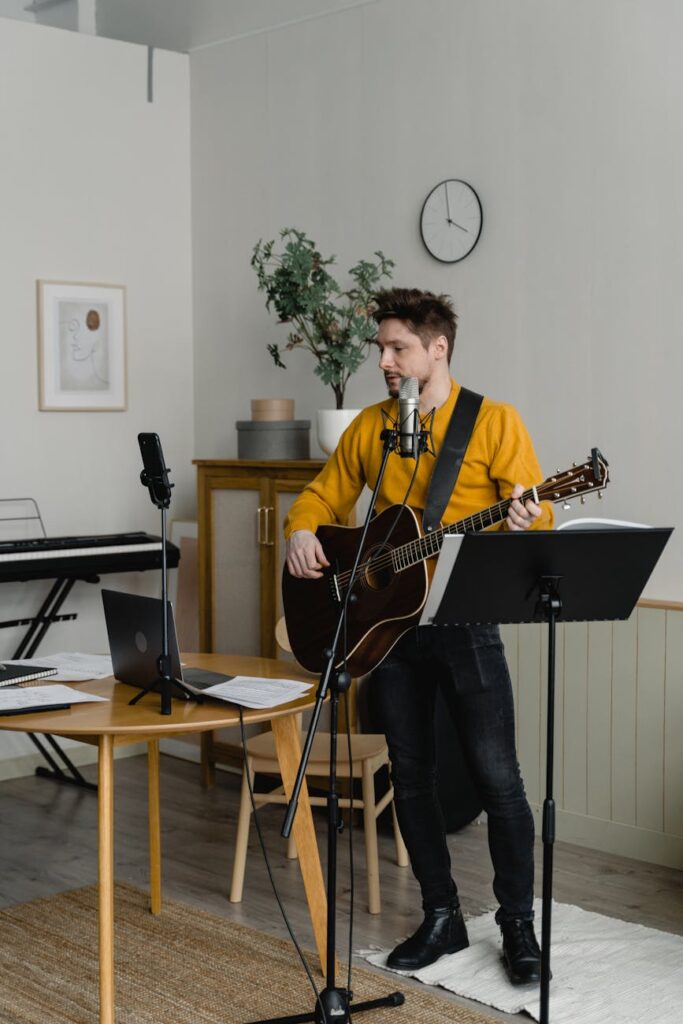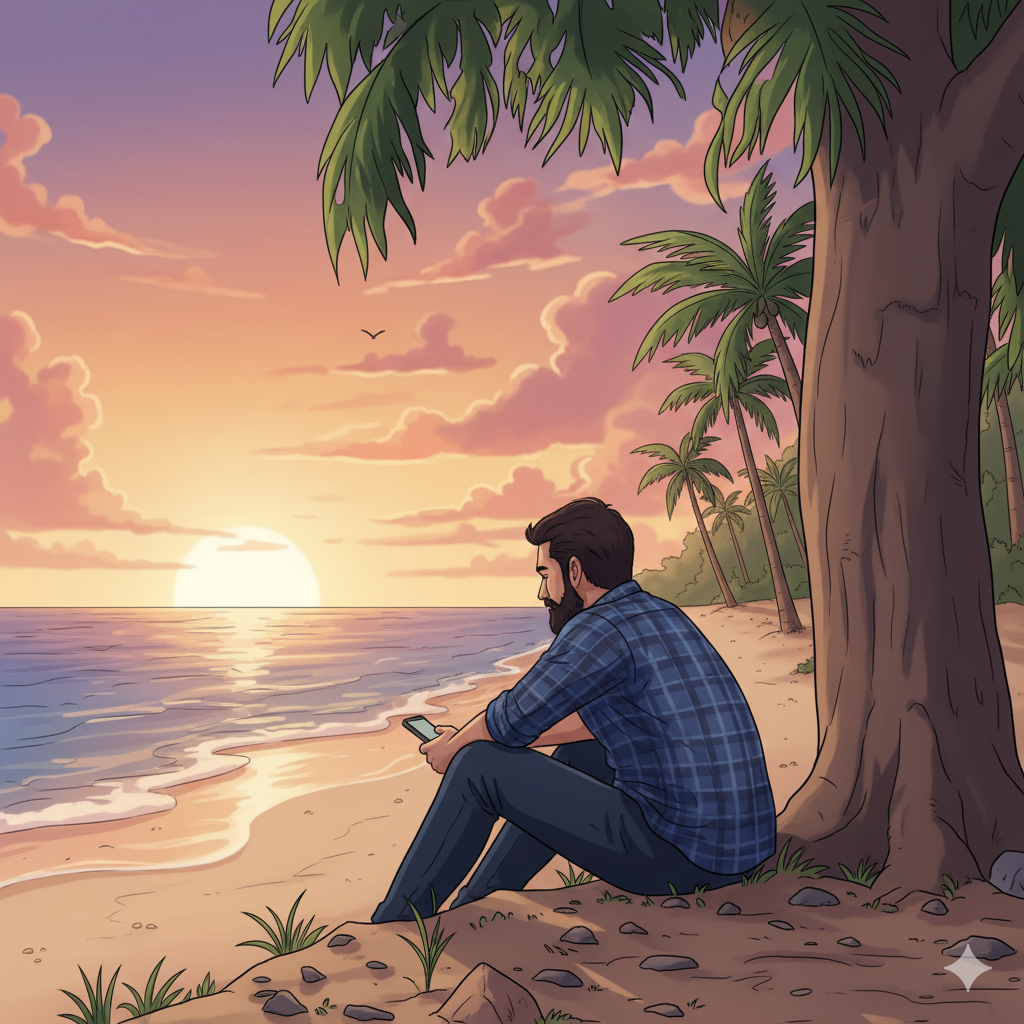Elias Thorne was born into a world brimming with music. His childhood home, nestled in the heart of a vibrant, bustling city, pulsated with a cacophony of sounds – the rhythmic clang of trams, the melodic cries of street vendors, the harmonious laughter of children playing in the park. Yet, amidst this symphony of life, Elias found himself drawn to a different kind of music, a melody that whispered of decay and the inevitable march of time. He called it the haunting melody of entropy.
His father, a renowned concert pianist, tried to steer Elias toward the structured elegance of classical compositions. His mother, a gifted vocalist, encouraged him to embrace the emotional power of opera. But Elias remained unmoved, his soul yearning for something more profound, something that echoed the universe’s slow, inexorable decline. He would spend hours listening to the rustle of dying leaves, the creak of aging wood, the faint ticking of grandfather clocks, finding a strange beauty in these sounds of decay. He believed these sounds, these whispers of entropy, held a deeper truth than any carefully composed sonata or soaring aria.
His musical journey began with a dilapidated piano he found abandoned in a dusty attic. Its keys were yellowed and chipped, its strings loose and out of tune, its wooden frame scarred with the passage of time. To everyone else, it was a useless relic. To Elias, it was a treasure, a vessel through which he could channel the haunting melody of entropy. He taught himself to play, his fingers dancing across the worn keys, coaxing out dissonant chords and melancholic melodies that seemed to mirror the piano’s own slow decay. He would improvise for hours, lost in a world of crumbling facades and fading memories, his music a poignant reflection of the universe’s relentless descent into disorder.
His unconventional music was met with bewilderment and disdain by the established musical community. Critics dismissed his compositions as chaotic and depressing, devoid of any artistic merit. Fellow musicians shunned him, labeling him a madman obsessed with decay. But Elias remained undeterred. He knew he was onto something profound, something that transcended the conventional boundaries of music. He saw beauty in the breakdown, poetry in the decay, and music in the silent whisper of entropy.
Years passed, and Elias continued to refine his unique musical style. He experimented with unconventional instruments – rusted metal pipes, cracked ceramic bowls, dried and hollowed gourds – incorporating their unique timbres into his compositions. He sought inspiration in abandoned buildings, decaying landscapes, and forgotten relics, finding a strange solace in their quiet surrender to the forces of entropy. He began to attract a small but devoted following, individuals who resonated with his melancholic melodies and understood the profound beauty he was trying to convey.
His most ambitious project was a symphony he titled “The Entropy Suite.” It was a sprawling, multi-movement work that chronicled the universe’s journey from order to chaos, from creation to destruction. He poured his heart and soul into the composition, weaving together the sounds of decay with moments of ethereal beauty, creating a sonic tapestry that was both haunting and strangely uplifting. The premiere of “The Entropy Suite” was held in an abandoned factory on the outskirts of the city. The audience, a motley crew of artists, intellectuals, and free spirits, sat captivated as Elias and his ensemble brought the symphony to life. The music filled the cavernous space, its melancholic melodies echoing off the rusted metal beams and crumbling brick walls. It was a performance that transcended mere entertainment, becoming a shared experience of the universe’s inevitable decline, a poignant reminder of the beauty that lies within decay.
The performance was a resounding success, garnering critical acclaim and solidifying Elias’s reputation as a visionary composer. He had finally found his voice, a voice that spoke not of eternal youth and boundless growth, but of the quiet beauty of decay, the haunting melody of entropy. His music, once dismissed as chaotic and depressing, was now recognized as a profound meditation on the nature of existence, a testament to the beauty that can be found in the inevitable march of time.
Elias continued to compose and perform, his music resonating with a growing audience who found solace in his melancholic melodies. He traveled the world, seeking inspiration in ancient ruins and forgotten landscapes, always searching for new ways to express the haunting melody of entropy. He became a voice for the forgotten, the discarded, the decaying, finding beauty in the things the world had left behind. His music was a reminder that even in decline, there is beauty, even in decay, there is life. And in the haunting melody of entropy, there is a profound truth about the nature of existence, a truth that Elias Thorne had spent his life trying to share with the world.

In his later years, Elias retreated to a secluded cabin in the mountains, surrounded by the quiet beauty of nature’s slow decay. He continued to compose, his music becoming increasingly introspective and ethereal. He found peace in the solitude, in the gentle rustle of leaves, in the slow creak of aging wood, in the faint whisper of entropy that permeated the air. He knew his time was drawing to a close, but he felt no fear, no regret. He had lived a life filled with purpose, a life dedicated to exploring the haunting melody of entropy. And as he lay on his deathbed, listening to the wind whisper through the trees, he smiled, knowing that he had finally become one with the music he had so passionately pursued.
The legacy of Elias Thorne lived on, his music continuing to inspire and resonate with generations of listeners. He had shown the world that beauty can be found in the most unexpected places, that even in decay, there is life, and that in the haunting melody of entropy, there is a profound truth about the nature of existence.






Leave a Reply